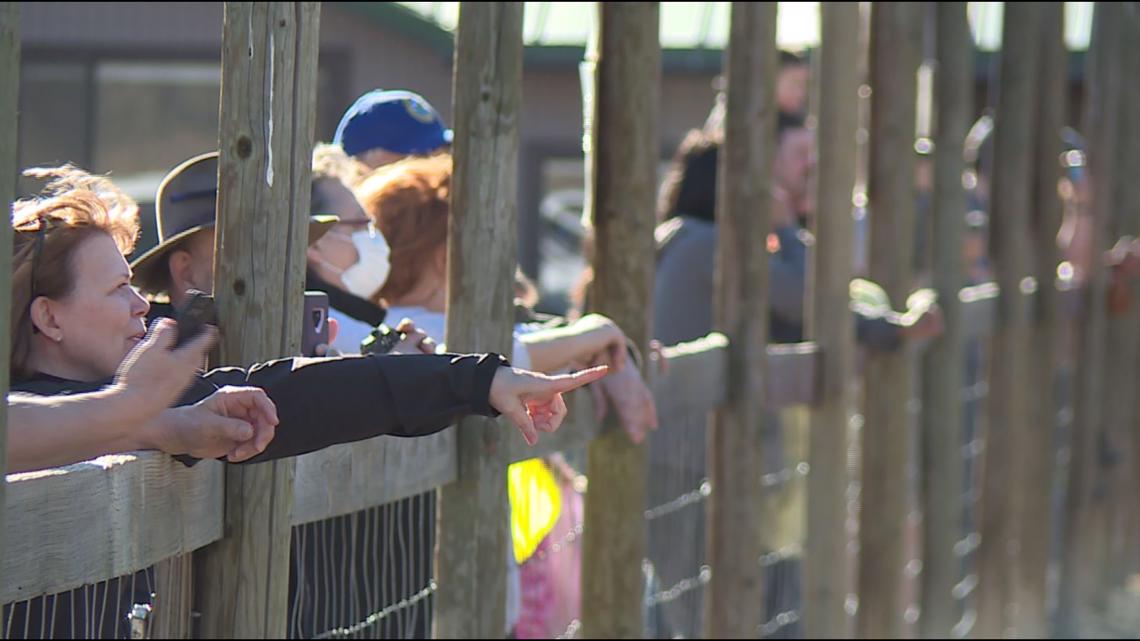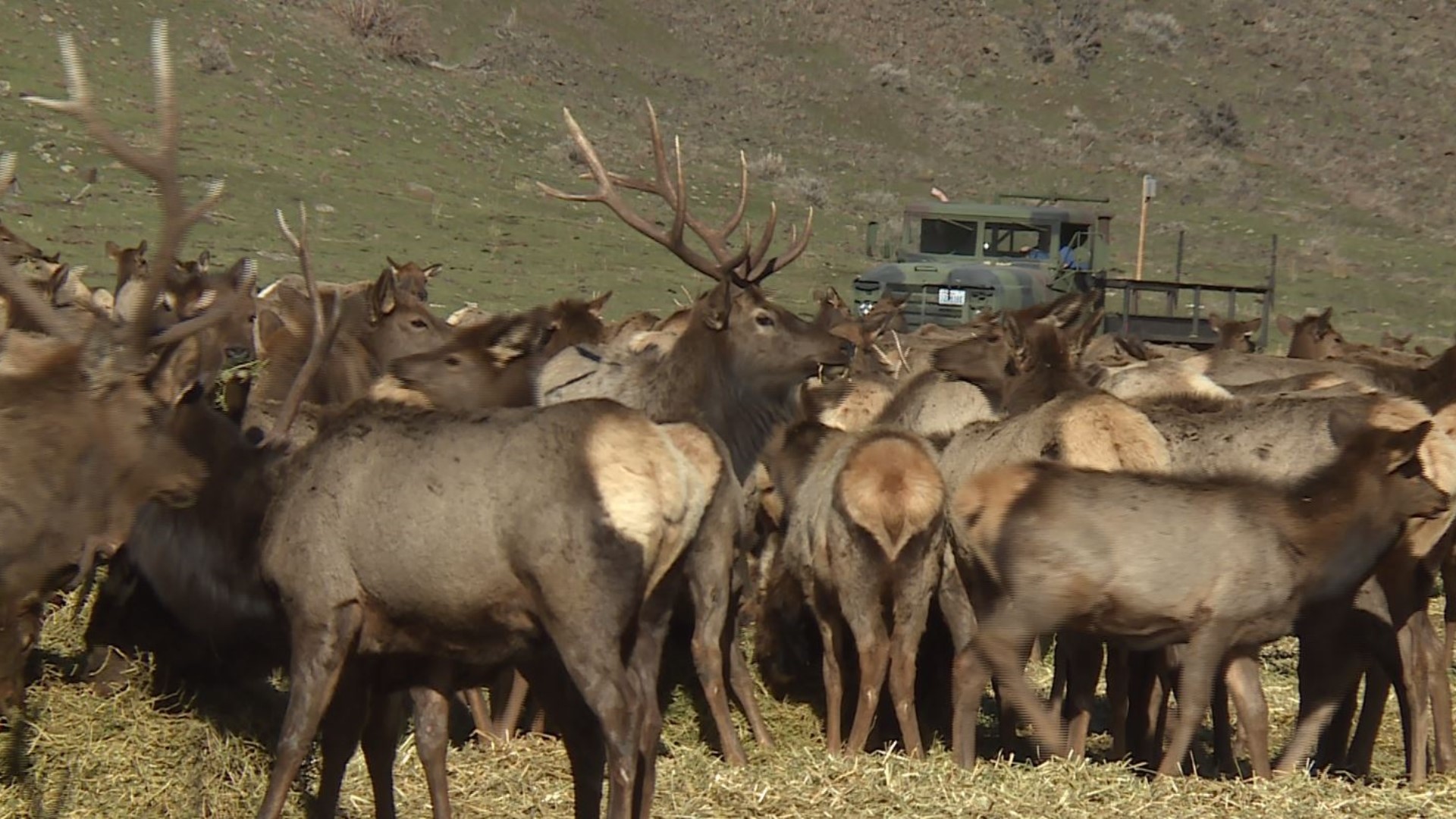NACHES, Wash. — Nobody has to ring the dinner bell at the Oak Creek Wildlife Area outside Naches. The elk just seem to know when to start hiking down from the mountains.
"They've been feeding since 1945 here," said volunteer Ron Nickelson. "They're marvelous animals."
And they're on view every winter afternoon to visitors who will drive for hours just to join the elk for lunch.
"It's one of the only areas in the state, and the Western U.S. really, where you can see wild elk up close," said Ross Huffman, Region 3 Lands Operations Manager for the Department of Fish and Wildlife. "They're just across the fence line from you and you'll see hundreds of them every day."
The program provides just enough hay to keep elk from wandering back onto their traditional winter range, which could spell disaster for local farmers.
"We've got a lot of high-value crops in the area," Huffman said. "Orchards, alfalfa fields, cattle operations, things like that."
Laura Beausoleil drove four hours from Mount Vernon to treat her son Graham to one of her favorite things to do as a kid.
"I grew up coming out here so I wanted to bring my son out to see and meet the elk," she said.
You may wonder if the feeding makes the elk more dependent, less wild. But 75 years in, the program has yet to domesticate an elk.
"As soon as we stop feeding and they go back to the mountains they are going to go back to being wild elk and if you see them out hiking they are going to take off and run away from you," Huffman said.
Elk herds have their own hierarchy. Some wait on the bluff for their turn. While down below, the bulls each claim a hay bale.
"They generally don't have two of them in one spot," Nickelson said, watching one elk bull amble towards another bull's hay. "Now the other one knows and away he goes."


There are closer places to go for lunch. But few are this rewarding.
"I think it's worth it," said Travis Nash, who drove from the Tri-Cities so his son could watch the feeding. "I think he has a lot of joy just watching them. I think he enjoys it".
The supplemental elk feeding program will be ending in March. As temperatures rise and everything greens up, the elk will return to the mountains to forage.
KING 5's Evening celebrates the Northwest. Contact us: Facebook, Twitter, Instagram, Email.

